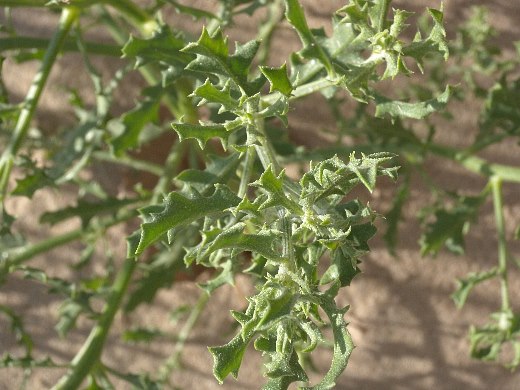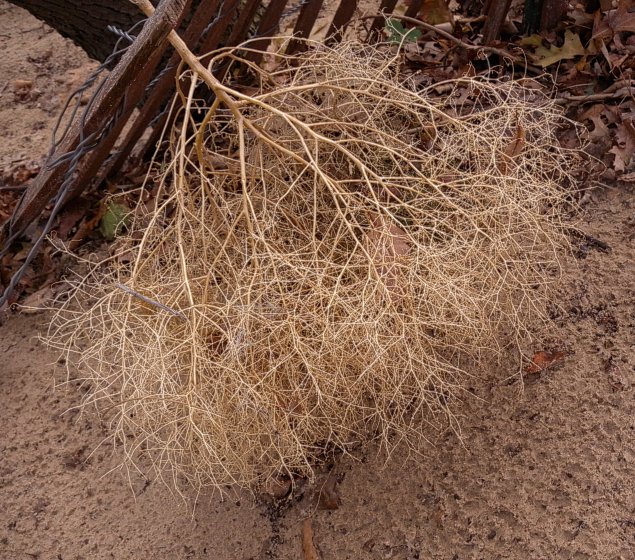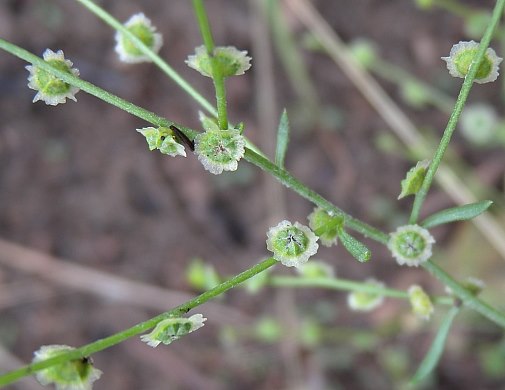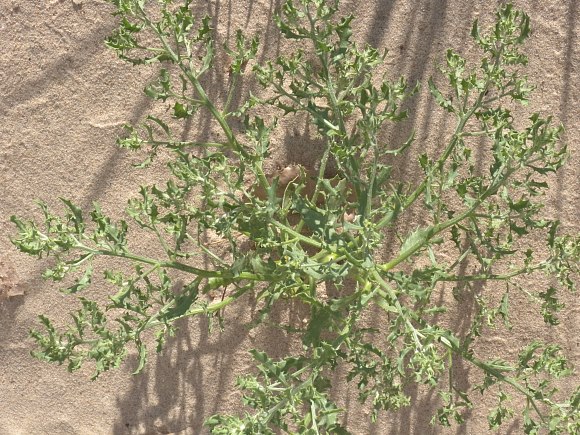
Leaves are either sessile or they have short pedicels up to ½" long. During the fall, the deciduous foliage of this plant becomes red or purple. The upper stems terminate in either spikes or panicles of whitish green flowers. The length of these spikes or panicles is 2-12" long; their branches are frequently curved or crooked. Sessile flowers occur individually along these branches and they are widely separated from each other. Individual flowers are about 5 mm. (1/6"), consisting of 5 green sepals that curve inward, 5 stamens, and a flattened ovary with 2-3 styles. Except for its apex, the ovary of each flower is covered by the sepals. Each sepal is lanceolate-ovate, slightly keeled in the center, and membranous along its margins. The flowers lack petals and there are no bracts.

Flowers are sometimes pistillate; such flowers lack stamens. The blooming period occurs from late summer into the fall for 2-3 months. The flowers are cross-pollinated by the wind. Each flower is replaced by a single horizontal seed that is covered by the persistent sepals (except at the apex). Surrounding each group of sepals and the seed, there is a pale membranous wing (wider than 0.5 mm.) that is circular and slightly fringed along its outer margin. Individual seeds are covered with translucent membranes that are chaffy. Individual seeds are about 1.5 mm. across, circular and flattened in shape, black, and smooth. During the fall or winter, the entire plant may break off at the base, becoming a tumbleweed that is blown about by the wind. As a result, the seeds are scattered across the landscape. The root system consists of a taproot.
Cultivation: The preference is full sun, mesic to dry conditions, and very sandy soil. The size of individual plants is variable.

Range & Habitat: The native Winged Pigweed is occasional in northern and west-central Illinois, otherwise it is rare or absent (see Distribution Map). Habitats include dry sand prairies, dry sandy savannas, sandy areas along major rivers, beaches and sand dunes along Lake Michigan, sandy fields, and barren areas along railroads. This plant typically occurs in sandy habitats with sparse ground vegetation and loose sand. It is a pioneer species that plays a minor role in stabilizing loose sand in wind-tossed areas.
Faunal Associations: Very little is known specifically about floral-faunal relationships for this species. An unidentified scale insect (Lecanium sp.) and an aphid (Macrosiphum gei) have been observed to suck juices from the foliage. Many insects that feed on Chenopodium spp. (Lamb's Quarters) undoubtedly feed on Winged Pigweed as well. Some upland gamebirds and granivorous songbirds probably eat the seeds, while mammalian herbivores probably feed occasionally on the foliage. Because the small seeds of species in the Goosefoot family can pass through the digestive tracts of both songbirds and mammals, they may be partially distributed by these animals.

Photographic Location: A sandy beach along Lake Michigan at the Indiana Dunes State Park in NW Indiana. The photographs of the foliage were taken during late July, while the photograph of the winged seeds and tumbleweed form of Winged Pigweed were taken during late September.
Comments: The odd-looking Winged Pigweed is the only species in its genus. It differs from other species in the Goosefoot family (Chenopodiaceae) by the appressed woolly hairs on its foliage and the winged membrane around its dry fruit. In contrast, other species in this family have foliage that is white-mealy, glandular-pubescent, or hairless. The flowers of Winged Pigweed occur individually on the branches of an inflorescence, whereas most species in the Goosefoot family have flowers that occur in clusters.